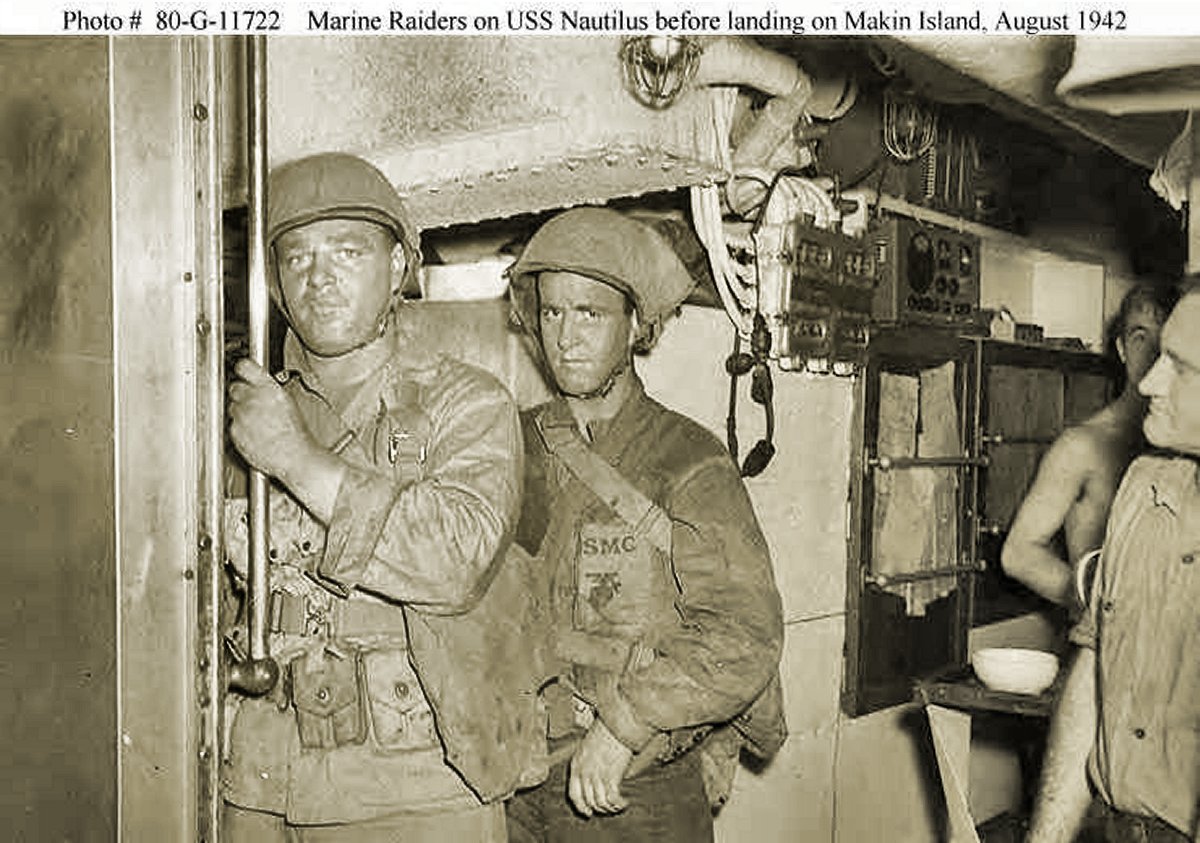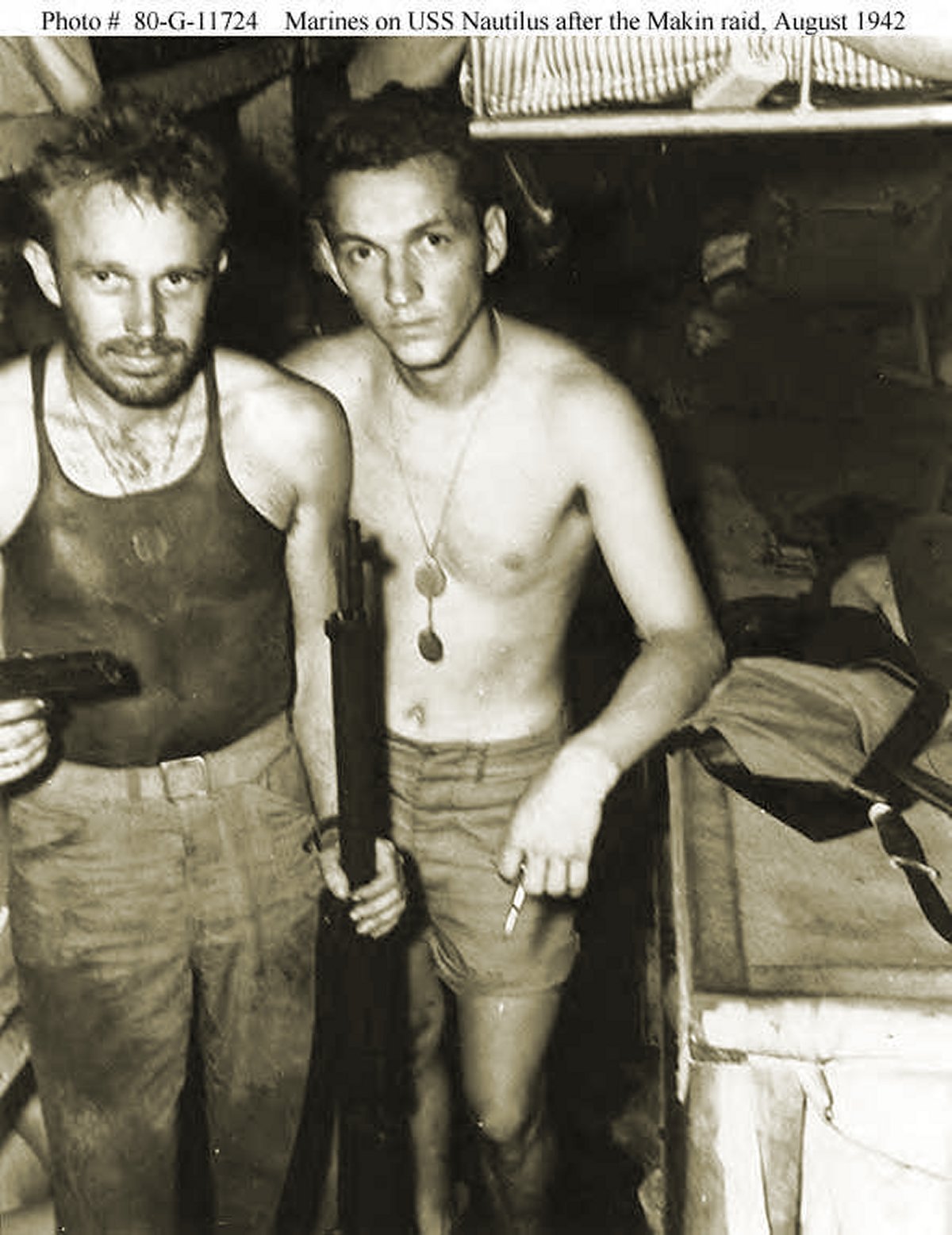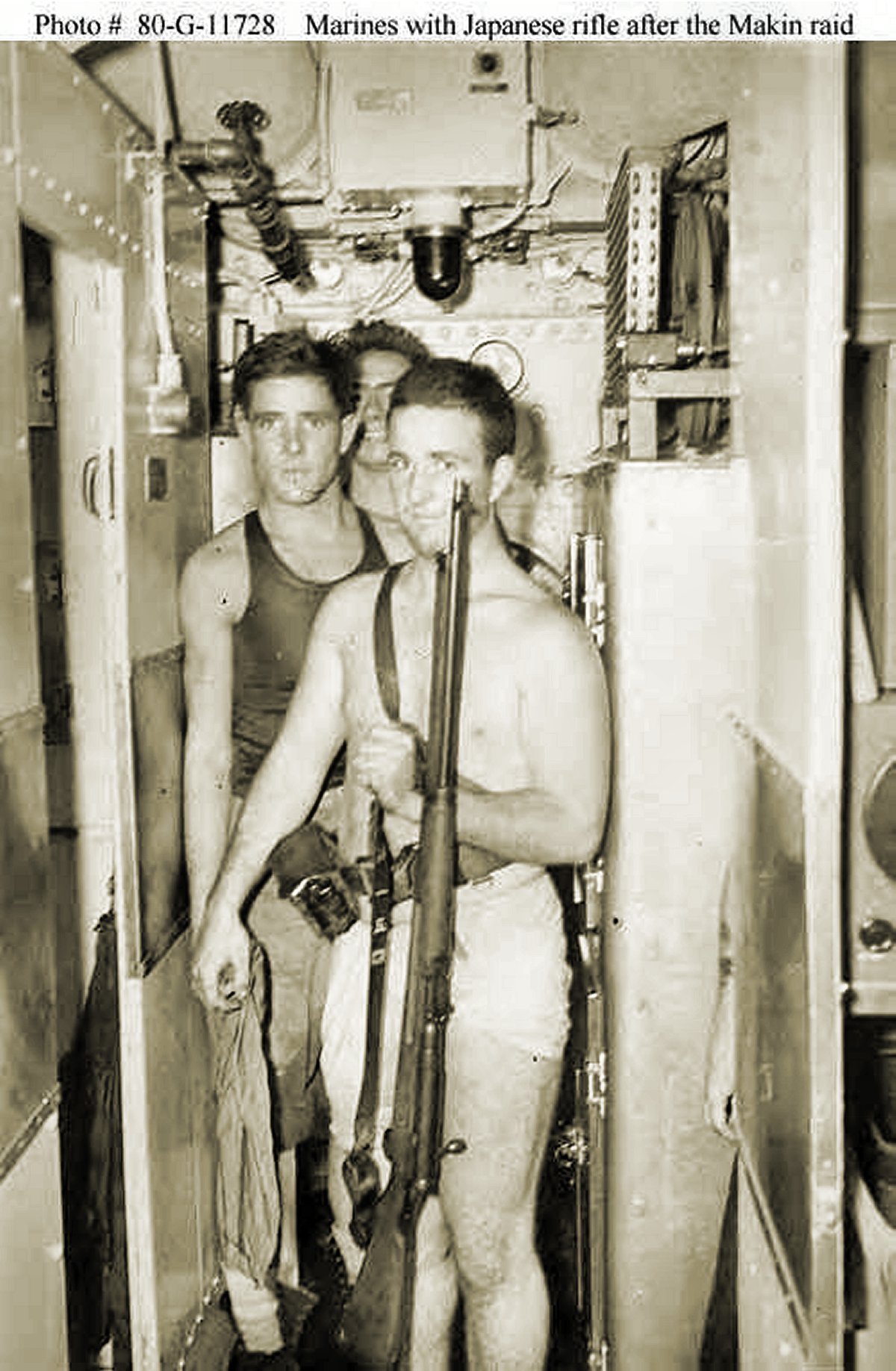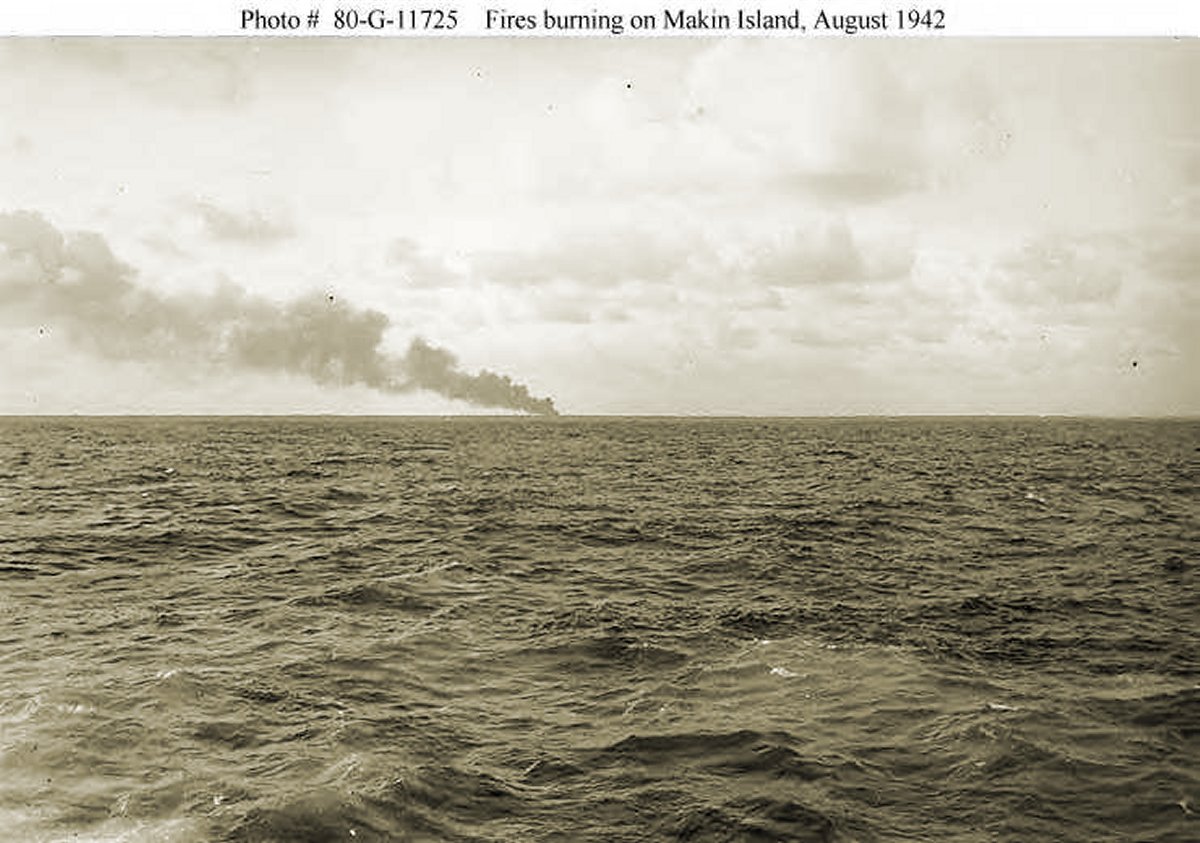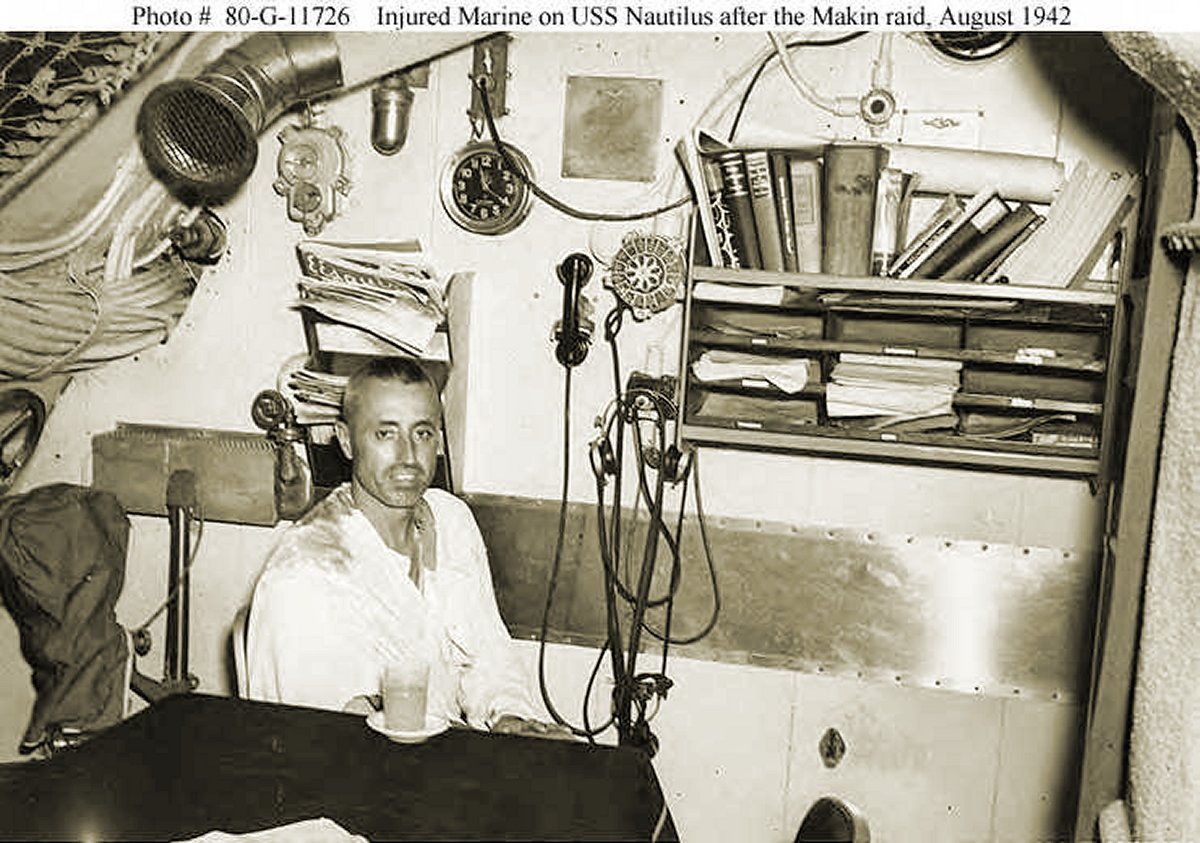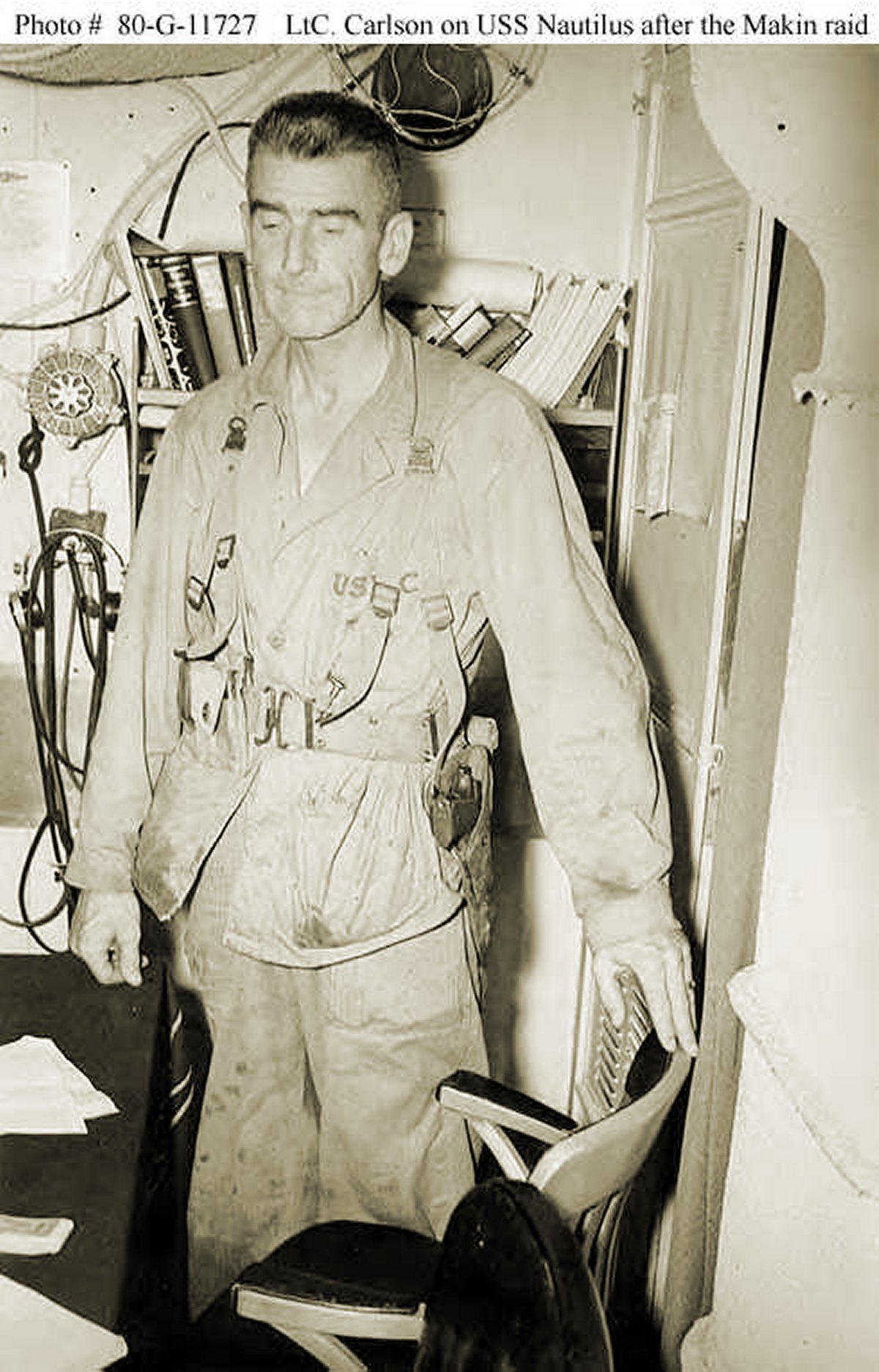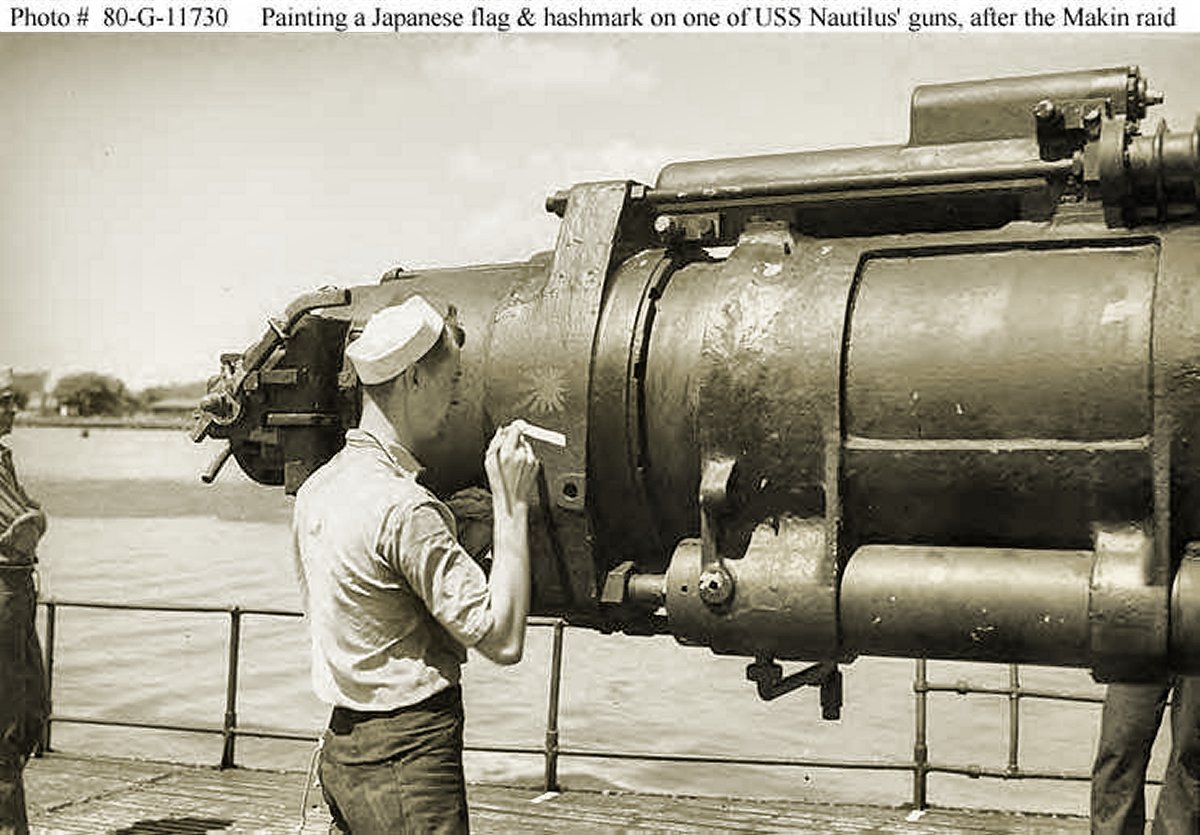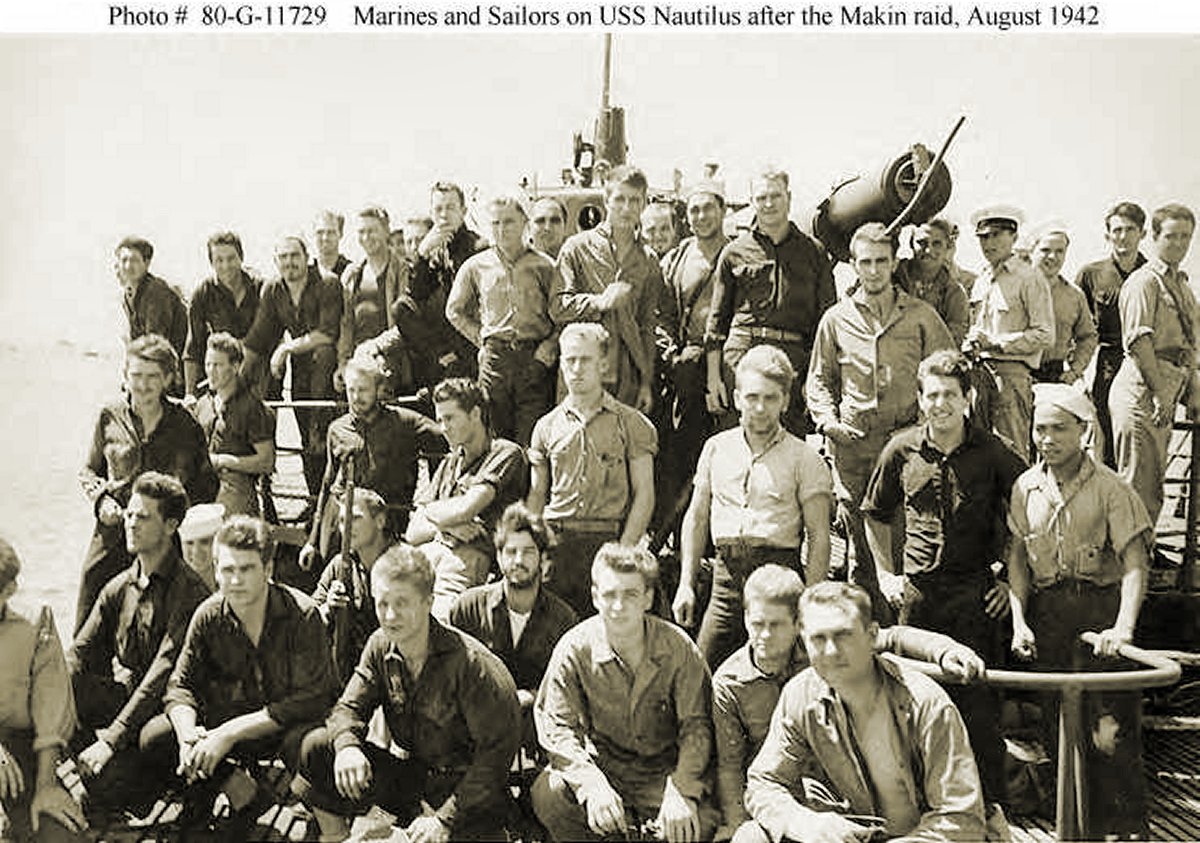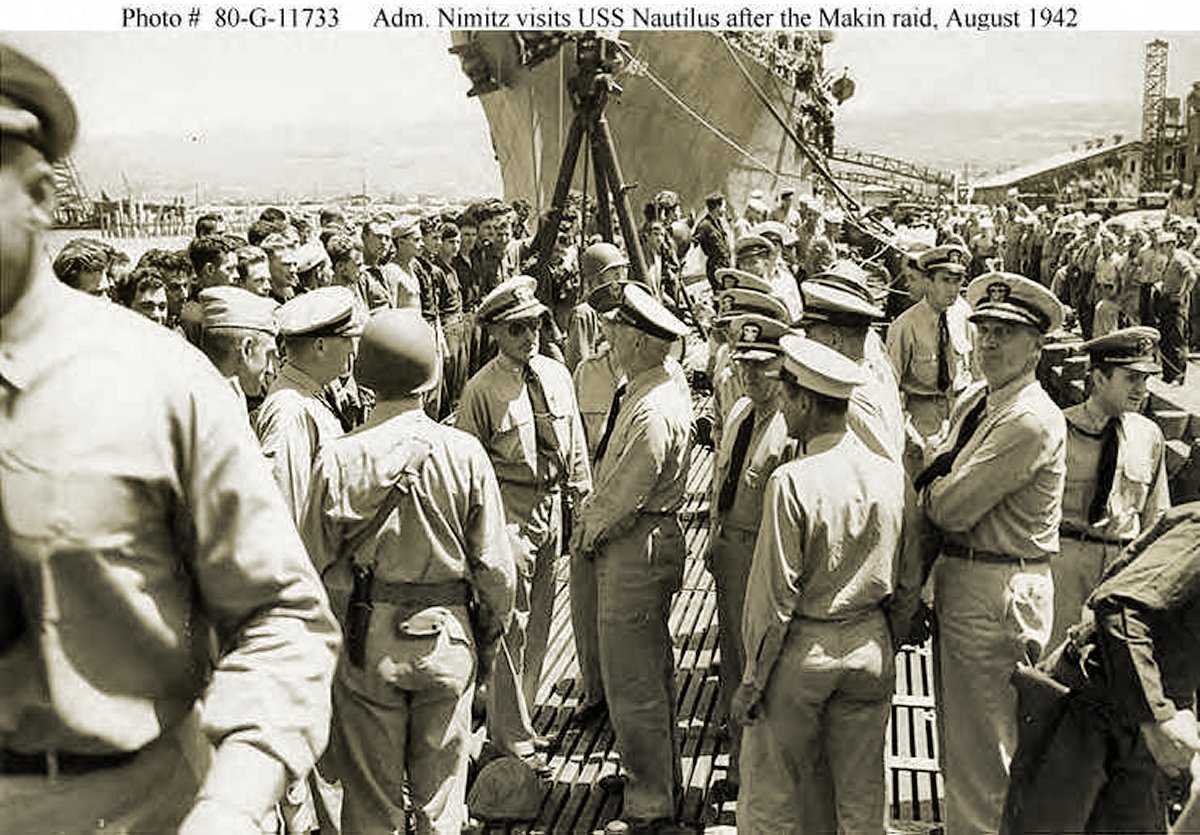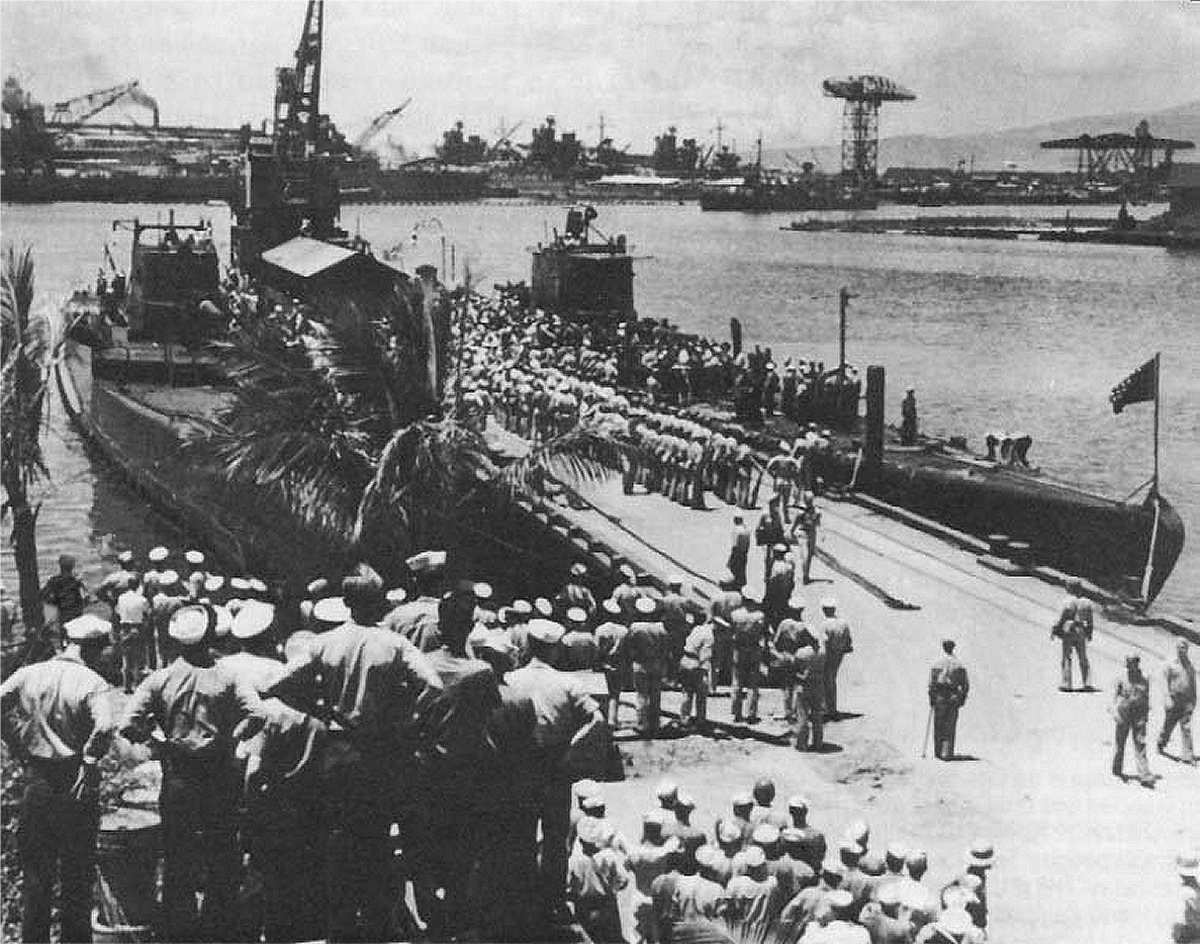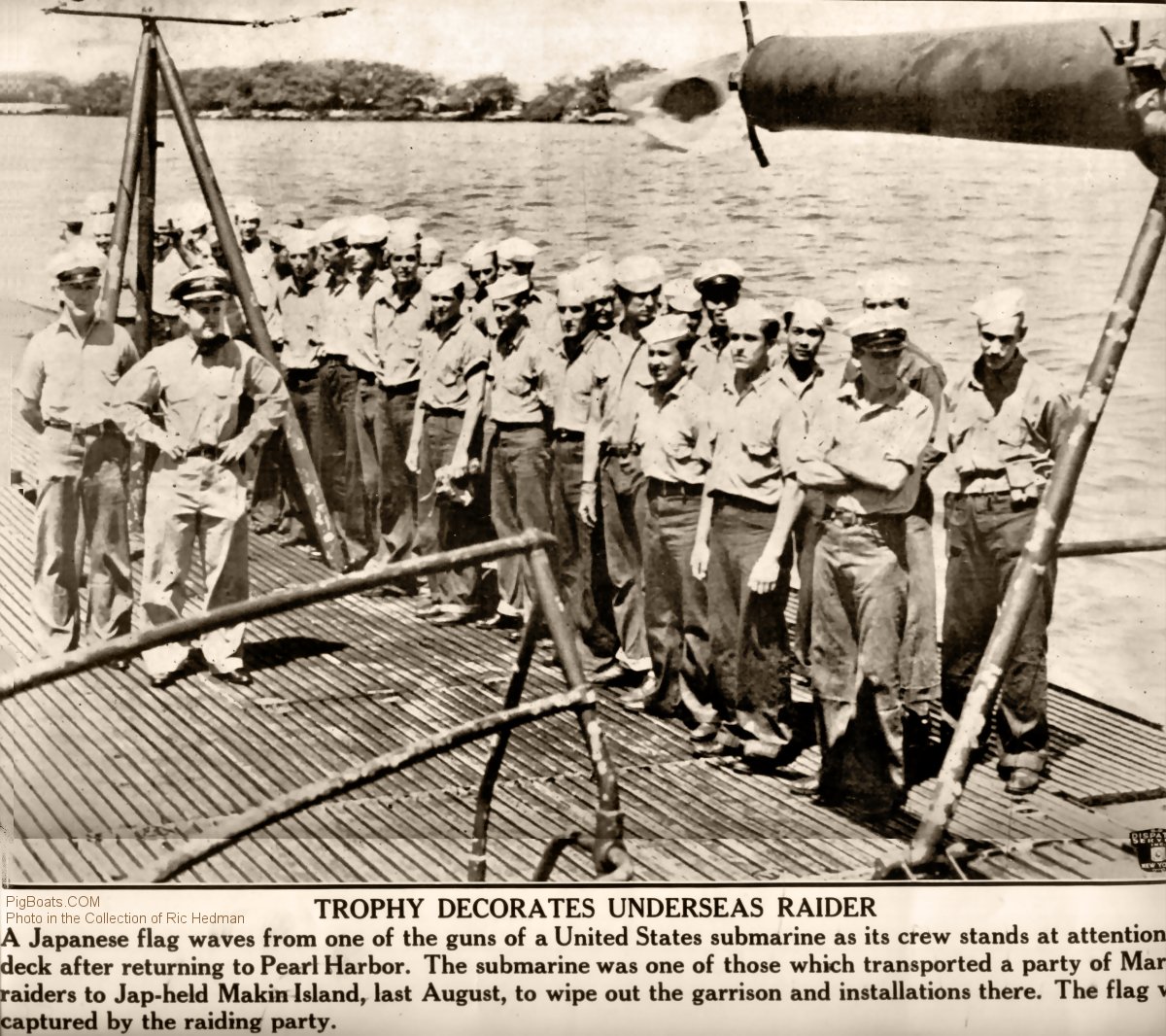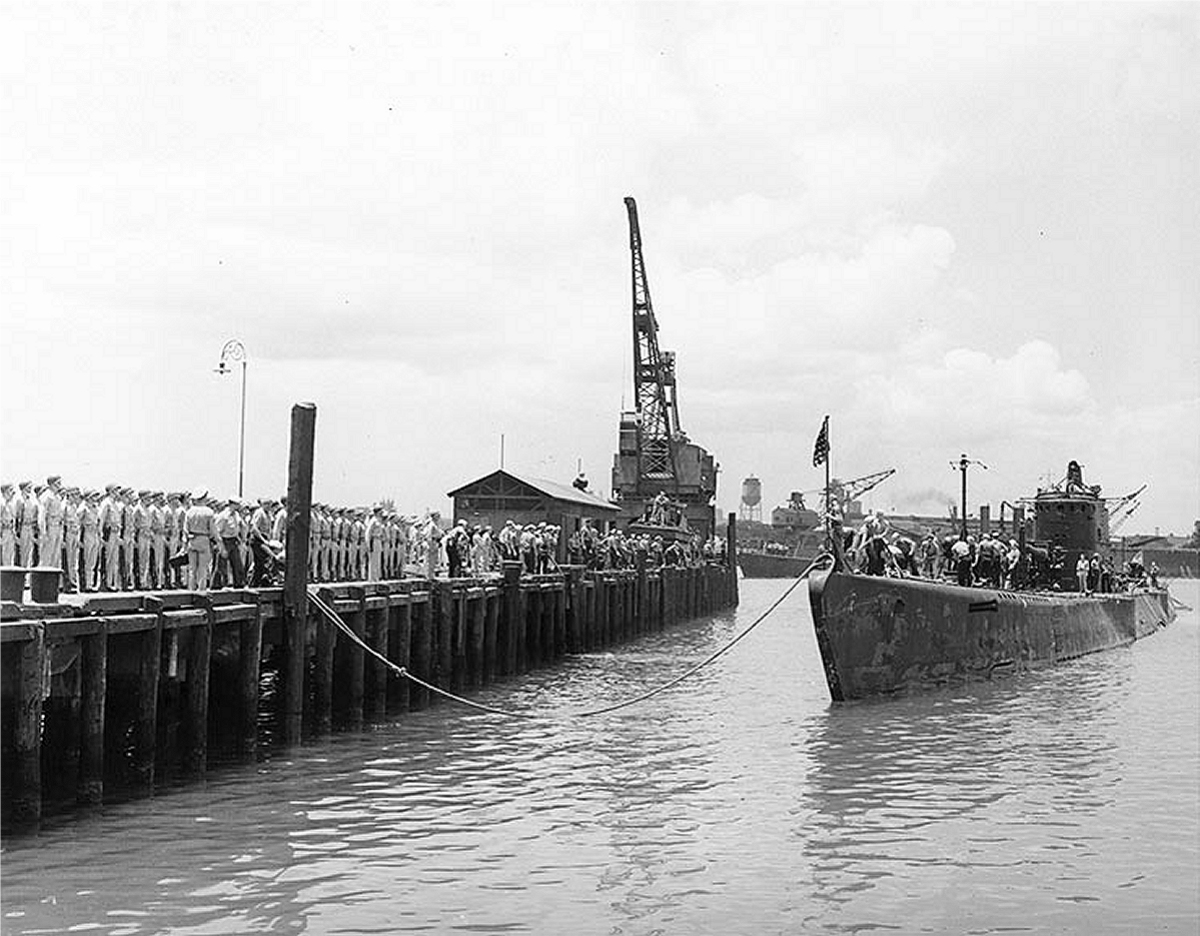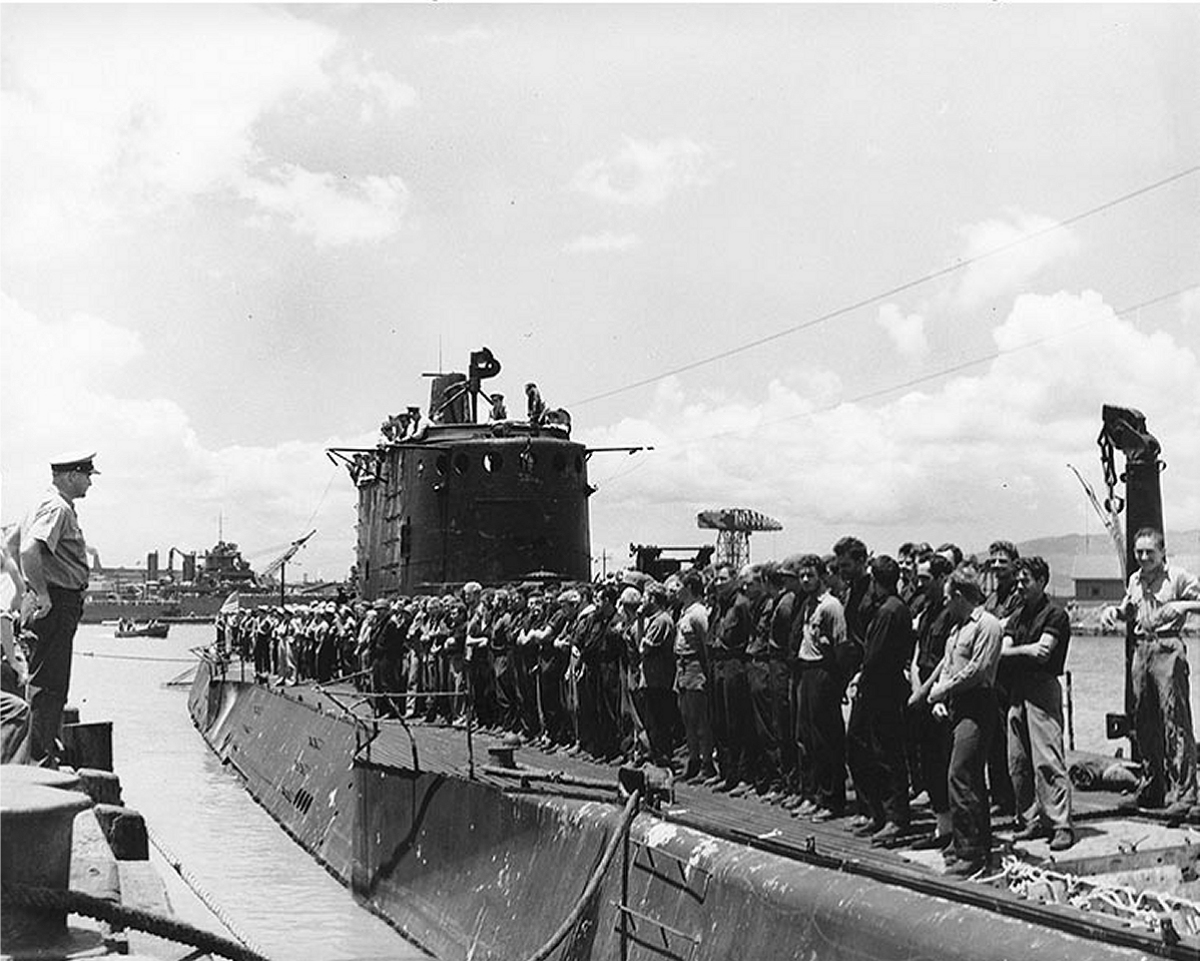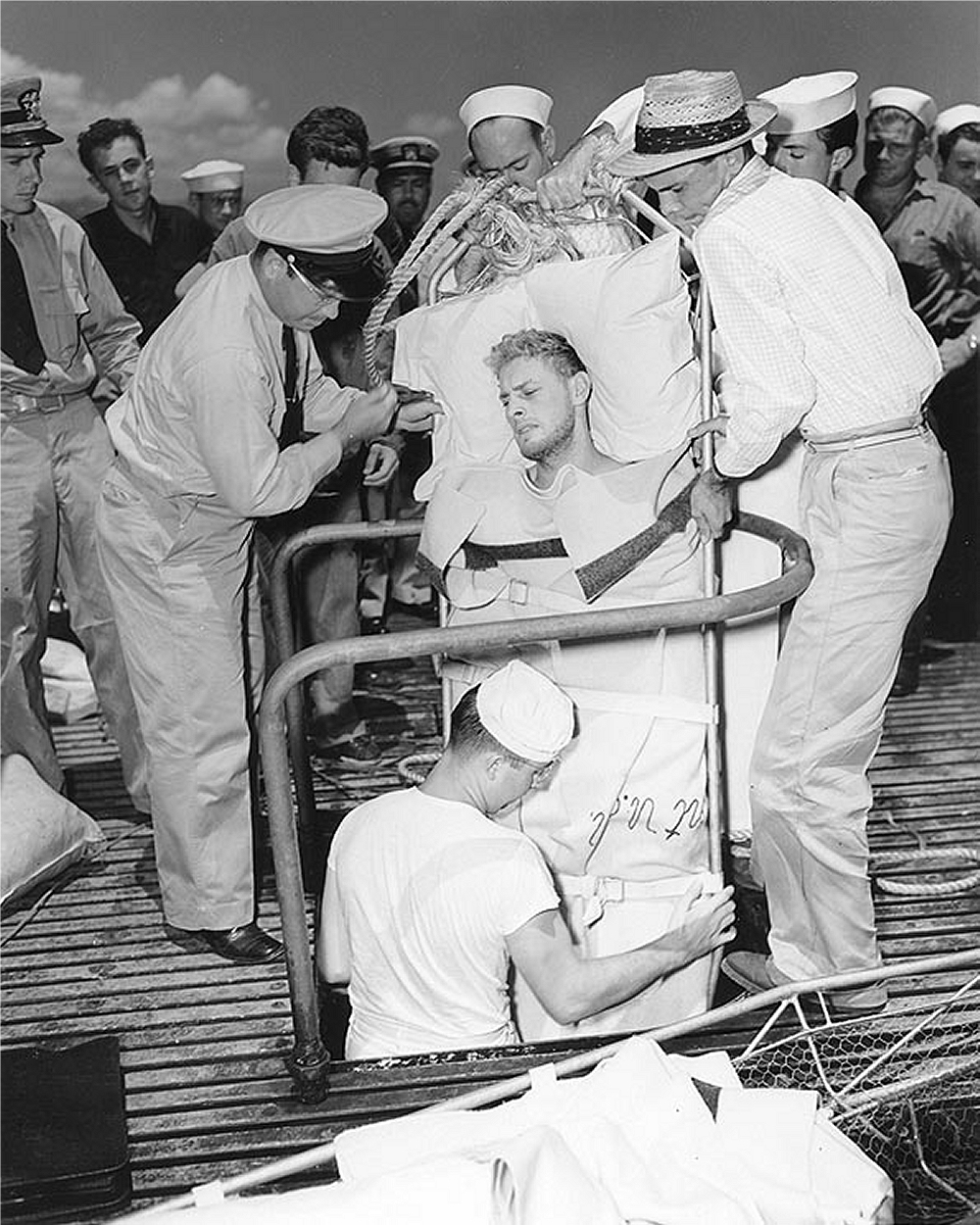Makin Island Raid: Difference between revisions
Pbcjohnston (talk | contribs) Formatted and added photo |
Pbcjohnston (talk | contribs) Added notes section and links |
||
| Line 2: | Line 2: | ||
=== <big>Notes</big> === | === <big>Notes</big> === | ||
<div style="text-align: justify;"><span style="color:#00008B"> | <div style="text-align: justify;"><span style="color:#00008B">The August 7, 1942 landing of United States Marines on Guadalcanal, Tulagi, and Florida Islands in the southern Solomons chain was the first major land offensive of the Pacific war. These landings were strategically important as they satisfied the perceived need to secure allied Australia's northern flank. To try to give the allied forces engaged in the Solomons the best chance of success, a plan was hastily drawn up for a diversionary raid against Makin Island in the Marshalls chain, approximately 1300 miles to the northeast of Guadalcanal. It was hoped that the Japanese would move forces to the Marshalls, thereby draining forces away from the Solomons. Secondary purposes of the raid were to gather experience in amphibious assaults, to gather intelligence on Japanese forces, and to gather prisoners for interrogation. | ||
Companies A and B of the 2nd Marine Raider Battalion were chosen for the raid, a total of 211 men. They were led by the charismatic LtCol Evans F. Carlson, a WWI, Nicaragua, and China veteran. One of Carlson's officers was Captain James Roosevelt, son of the President. Secrecy was important, so the plan had the Raiders transported to Makin on two of the huge old V-boats, [[168|'''Nautilus (SS-168)''']] and [[V-4|'''Argonaut (SM-1)''']]. After a short period of periscope beach reconnaissance, the Marines were to be landed via outboard engine powered rubber inflatable boats. Once ashore they were to engage and kill as many of the Japanese garrison troops as possible, take prisoners if feasible, gather intelligence, and destroy any military facilities. The submarines got underway from Pearl Harbor on August 8, 1942 (the day after the Guadalcanal landings) and arrived off Makin on August 16. The assault was planned for the next morning. | |||
The Marines encountered considerable difficulties in embarking on the rubber boats from the side of the rolling submarines. Boats were overturned and engines swamped. They eventually headed off to the beach, got reorganized, and attacked their objectives. Nautilus stood by in support, lobbing 65 rounds from her big 6-inch guns into the lagoon, striking a small freighter and a patrol craft, although later analysis could not confirm any sinkings. The return to the submarines after the raid was equally chaotic, requiring significant effort and risk by both the Marines and the submarine crews. In the end, 30 Marines were not accounted for and believed dead (in fact, nine were still alive and were captured; they were later executed). The submarines set sail for Hawaii, carefully tending to numerous wounded Marines. They arrived in Pearl Harbor to a hero's welcome. | |||
While over half of the Japanese garrison was killed by the Raiders and valuable experience in amphibious landings was obtained, the raid for the most part did not achieve its objectives. The Japanese did not take the bait and little if any enemy forces were diverted from the Solomons. In fact, realizing their vulnerabilities in the Marshalls, the Japanese ''reinforced'' all of the island garrisons there, turning the later invasion of Tarawa into a bloodbath and a Marine legend. The final legacy of the raid is mixed, and historians have debated this point for decades. For further information, we encourage you to read the articles at the links below: | |||
●[https://text-message.blogs.archives.gov/2012/11/14/seventy-years-ago-the-makin-island-raid-august-1942-2/ Seventy Years Ago: The Makin Island Raid, August 1942]<br> | |||
●[https://warfarehistorynetwork.com/article/the-makin-raid-what-really-happened-to-the-marines/ The Makin Island Raid: What Really Happened to the Marines?]<br> | |||
●[https://www.usni.org/magazines/proceedings/1946/october/makin-island-raid The Makin Island Raid]<br> | |||
</span> | |||
[[File:Red bar sub new 2.jpg]] | [[File:Red bar sub new 2.jpg]] | ||
Revision as of 13:15, 24 June 2023
Notes
Companies A and B of the 2nd Marine Raider Battalion were chosen for the raid, a total of 211 men. They were led by the charismatic LtCol Evans F. Carlson, a WWI, Nicaragua, and China veteran. One of Carlson's officers was Captain James Roosevelt, son of the President. Secrecy was important, so the plan had the Raiders transported to Makin on two of the huge old V-boats, Nautilus (SS-168) and Argonaut (SM-1). After a short period of periscope beach reconnaissance, the Marines were to be landed via outboard engine powered rubber inflatable boats. Once ashore they were to engage and kill as many of the Japanese garrison troops as possible, take prisoners if feasible, gather intelligence, and destroy any military facilities. The submarines got underway from Pearl Harbor on August 8, 1942 (the day after the Guadalcanal landings) and arrived off Makin on August 16. The assault was planned for the next morning.
The Marines encountered considerable difficulties in embarking on the rubber boats from the side of the rolling submarines. Boats were overturned and engines swamped. They eventually headed off to the beach, got reorganized, and attacked their objectives. Nautilus stood by in support, lobbing 65 rounds from her big 6-inch guns into the lagoon, striking a small freighter and a patrol craft, although later analysis could not confirm any sinkings. The return to the submarines after the raid was equally chaotic, requiring significant effort and risk by both the Marines and the submarine crews. In the end, 30 Marines were not accounted for and believed dead (in fact, nine were still alive and were captured; they were later executed). The submarines set sail for Hawaii, carefully tending to numerous wounded Marines. They arrived in Pearl Harbor to a hero's welcome.
While over half of the Japanese garrison was killed by the Raiders and valuable experience in amphibious landings was obtained, the raid for the most part did not achieve its objectives. The Japanese did not take the bait and little if any enemy forces were diverted from the Solomons. In fact, realizing their vulnerabilities in the Marshalls, the Japanese reinforced all of the island garrisons there, turning the later invasion of Tarawa into a bloodbath and a Marine legend. The final legacy of the raid is mixed, and historians have debated this point for decades. For further information, we encourage you to read the articles at the links below:
●Seventy Years Ago: The Makin Island Raid, August 1942
●The Makin Island Raid: What Really Happened to the Marines?
●The Makin Island Raid

U.S. Navy photo
Page created by:
Ric Hedman & David Johnston
1999 - 2023 - PigBoats.COM©
Mountlake Terrace, WA, Norfolk, VA
webmaster at pigboats dot com

